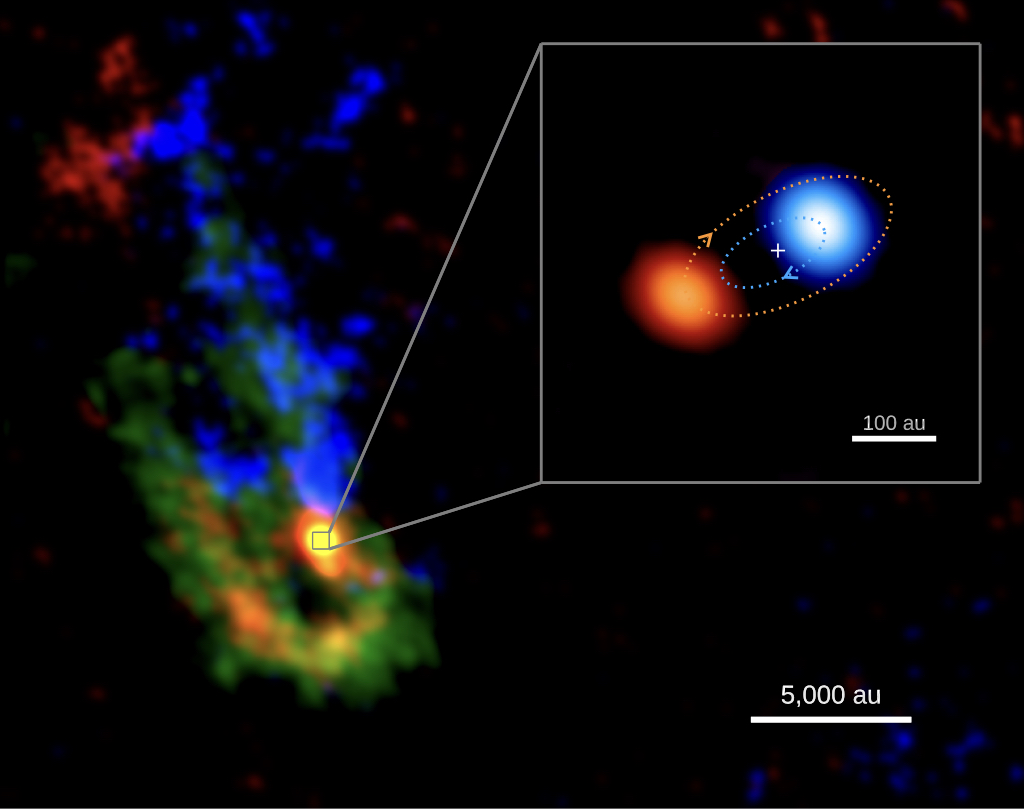Spiraling giants: witnessing the birth of a massive binary star
High-mass stars (more than 8 times the mass of the Sun) form in star clusters and often in binary or higher-order multiple systems. Despite their importance, very little is known of the early evolutionary phases of such stars. This is due both to the fact that their formation takes place on very short timescales and at the large distances to which massive star forming regions are typically located. The large distances make necessary observations at high angular resolution to be able to probe the densest part of the clouds where star formation takes place.
A team of astronomers led by Yichen Zhang from the RIKEN Cluster for Pioneering Research in Japan and including Maria Teresa Beltran from INAF-Astrophysical Observatory of Arcetri, thanks to observations at very high spatial resolution (50 ua) with the ALMA interferometer at 1mm were able to study, for the first time, the formation of a binary system in the high-mass star-forming region IRAS 07299-1651, located at 1.68 kpc. In particular, a proto-binary system consisting of two stars of about 10 solar masses, with a separation of 180 ua and an orbital period of 570 years, was revealed. The results suggest that the system originated from the fragmentation of a massive disk and that each proto-star is currently surrounded by a rotating disk.
 |
| Figure 1: ALMA’s view of the IRAS-07299 star-forming region and the massive binary system at its center. The background image shows dense, dusty streams of gas (shown in green) that appear to be flowing towards the center. Gas motions, as traced by the methanol molecule, that are towards us are shown in blue; motions away from us in red. The inset image shows a zoom-in view of the massive forming binary, with the brighter, primary protostar moving toward us shown in blue and the fainter, secondary protostar moving away from us shown in red. The blue and red dotted lines show an example of orbits of the primary and secondary spiralling around their center of mass (marked by the cross). |
The results of this work are published in "Dynamics of a massive binary at birth", Y. Zhang et al, Nature Astronomy.
Edited by M. Beltran and A. Gallazzi



